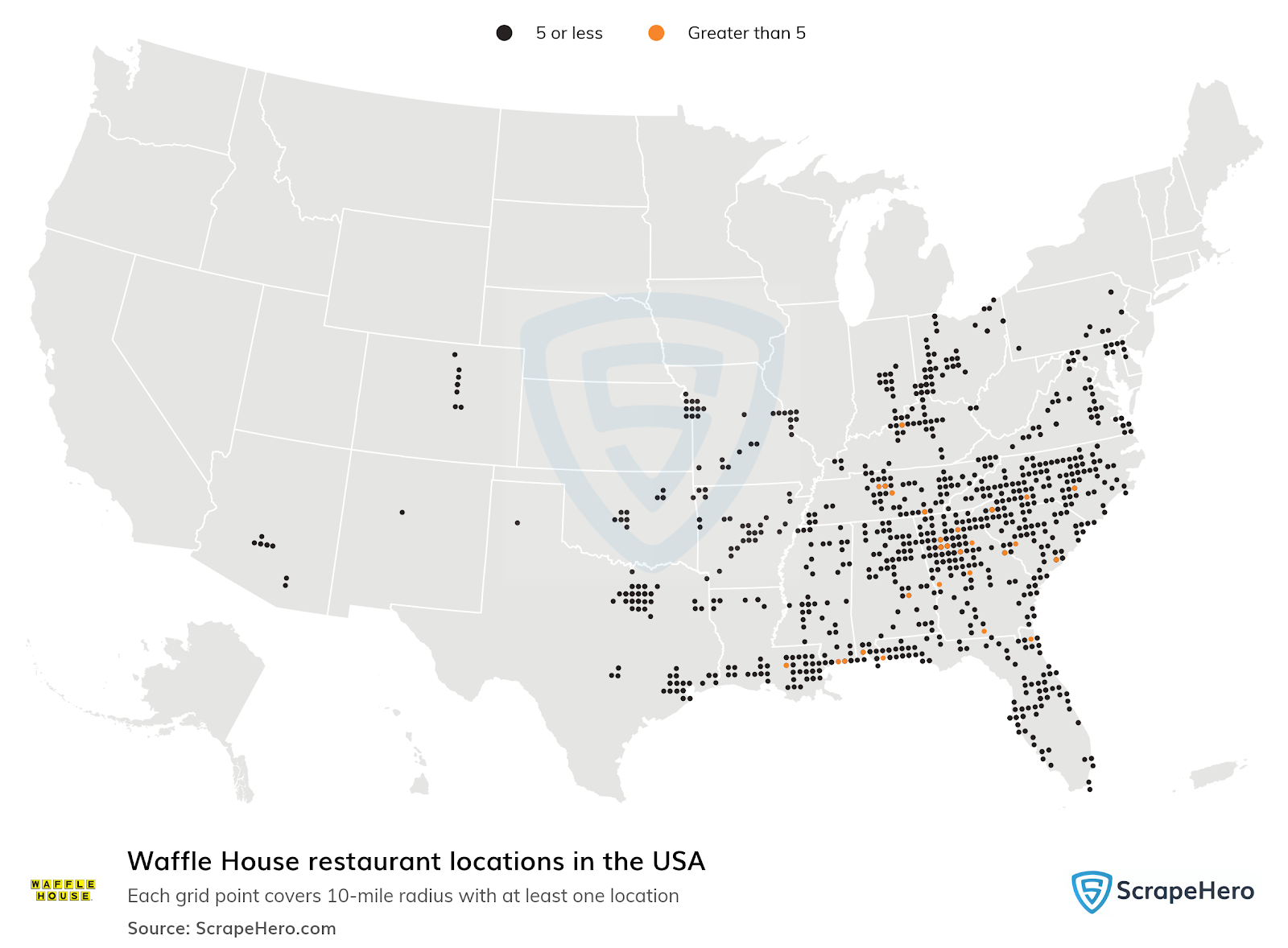As a stats nerd, I love it when clever people make lives easier by finding clever, easy, indirect ways to estimate the thing they want to measure. As a statistics instructor, I find such examples engaging, as they encourage students to think critically and nurture their statistical literacy.
Like the Waffle Shop index. TL;DR: During weather emergencies, the federal government tracks whether or not Waffle Shops are open as a proxy for the severity of damage in a community. Waffle Shops are tough as hell, and if they close, a community needs help.
Below is a map of Waffle Houses.
 |
| https://www.scrapehero.com/store/wp-content/uploads/maps/Waffle_House_USA.png |
Due to Hurricane Beryl, the people of Houston, Texas discovered an even more accurate measure the severity of electricity outages: The Whattaburger Index:
 |
| https://www.facebook.com/photo/?fbid=8242206945824619&set=gm.2698315720337038&idorvanity=1416658058502817 |
Certainly, Waffle House exists in Texas. 126, according to ScrapeHero. But there are more Whattaburgers. 733, also according the ScrapeHero. Which is why it has been such a good tool for tracking power outages in Texas due to Hurricane Beryl:
How to use it in class:
1. Large samples be good. The Whataburger Index is a more fine-grained sampling available in Texas this way, correct? The Waffle Shop Index offers some information, but the larger n-size crated by the Whataburger offers for a larger sample of Houston.
2. How do you find data that you need quickly? By using clever archival data. Instagram data to find the happiest colleges in the United States. General Social Survey to test the validity of horoscopes. Whataburger data to track the electric grid in Houston.
3. Warm-up activity for students. I think I might use this as a warm-up activity to ask students to find the Pennslyvania equivalent. Sheetz? Eat n' Park? As a follow-up, I might ask them to visit the corporate websites and see if there is a live map showing whether locations are open or closed.
4. Operationalization. You could operationalize damage by, say, insurance claims or phone surveys. Or, you could work very quickly by operationalizing damage using a free, readily available map of Whataburger locations.
5. Data IRL. While I am delighted by the cleverness of this example, I realize that this map was used by desperate Houstonians dealing with awful weather and no electricity. In a time when there was a lot of confusion and not enough communication, this gave people the information they needed, in real-time and in real life.


Comments
Post a Comment